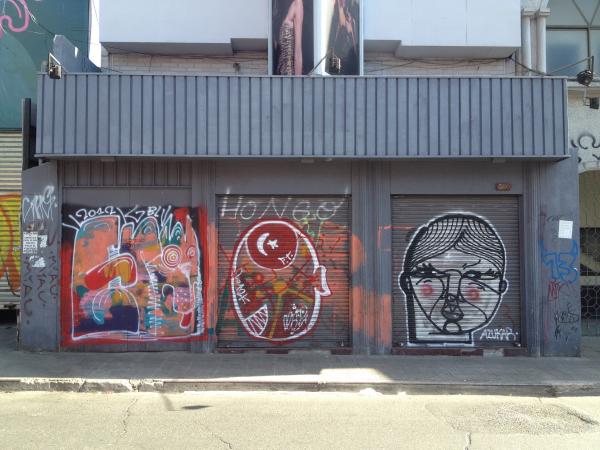
Gökhan MURA
During my secondment in Santiago, I explored the interaction of Turkish Immigrants in Santiago with designed objects, as well as with public spaces. The study focused on the one hand on Turkish immigrants’ narratives about immigration through objects, and on the other, on their emotional attachment to public space and their experiences therein.
When I returned to conduct field research with the Turkish immigrant community in Santiago, I carried on with the same line of questioning concerning their relationship to public space, this time with a first hand empirical approach. In semi-structured interviews, the Turkish immigrants were asked about their domestic life, their life in public spaces and their feelings of belonging. Secondly, the interviewees were asked to map out their emotional experiences in public spaces in order to understand which emotions public spaces elicit for them in Santiago.
There is a small Turkish community in Santiago. I interviewed a select portion of this small community, representing members from a variety of social and economic backgrounds. I accessed these people either directly by visiting them in their shops, having recognized their background through Turkish shop signs, or thanks to a list generously provided by the Turkish Embassy in Santiago in support of my research.
During the interviews, aside from fundamental information about their background, the Turkish immigrants were asked questions concentrating on 3 areas of interrogation:
1. What is their daily life like in Santiago within their private spheres? What kind of objects have they brought to Santiago, which do they use, what kinds of new habits and practices have they developed and which of them do they take back to Turkey? (As a reference to my previous study.)
2. How do Turkish immigrants experience public spaces in Santiago? What do they think about public space in Santiago? What do they do, in which places, and how do they exist in these places?
3. Where do they feel home is? What activities or people or places remind them home?
Aside from these 3 lines of inquiry, I also asked them to match certain emotions with certain places. They pointed out the places they liked and hated in Santiago so that I could mark them on a map. The analysis of these interviews will result in a map of the spatial experiences of Turkish immigrants in Santiago. The outcome will be a collection of the experiences of Turkish immigrants in public spaces in Santiago, and an experiential key (emotions, attachments and perceptions of Turkish immigrants towards certain places) to place these experiences on a map of Santiago. I am very hopeful if the same study is carried out with immigrants to Santiago from other places, such as Peru, Haiti, Venezuela etc. as well as residents originating from the city, that we could develop a complex and multi-layered comparative map of Santiago. This experimental exploration has the potential to be extended for different communities in Santiago in particular and the framework of this exploration can be applied to other cities as well.
